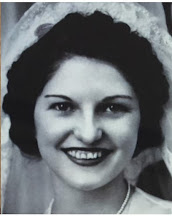While there may be some of you who will be more than happy to see 2020 to the door tonight, we need to pause and consider, in this twilight of a difficult year, what the year may have brought to us.
To say that this would be an easy exercise would not be quite inclusive of the difficulties such a year presented for some of us, not the least of which are those families who have lost loved ones to a most unexpected disease. And yet, though we may not be ready to consider it, this strange and unwieldy year has presented us with some hidden benefits, as well. We just need to don spectacles to enable us to see twenty-twenty about this year we're about to bid adieu.
I've learned that developing an attitude of gratitude can help lift up our outlook, so even in this dreary disappointment of a year, I'm choosing to see benefits. It took a year like this, for instance, for me to look forward to an expanded vegetable garden—just in case—and then realize how much more healthy our meals were becoming when we couldn't eat out as much, or had to go back to basics in the kitchen because of supply chain problems emptying our grocery store shelves. Our inventiveness certainly got a workout—but at least we had those creative juices to fuel our inspiration.
Our lawn, as another example, experienced an unexpected revival, after post-drought ravages, because a family friend's lovely plans for a sunset wedding on the beach in San Diego got canceled. We offered, as the only consolation we could think to provide, our humble front lawn for a private garden wedding where extended family could gather safely outdoors. Surprise! The family took us up on what was a far cry from the natural beauty of the Pacific coast, and we all—after hustling to replant our dead lawn—had the opportunity to re-discover how fun it is to just get together, without all the professional trappings of a turn-key event, and enjoy each others' company while celebrating a special day. Added bonus: we again have a green, not dead and brown, lawn for a front yard.
All that to say: difficulties have a way of prompting us to delve inwardly deeper to find the resilience that keeps humankind going. I'm afraid, in our case, our inner resilience had been getting lazy and needed that workout. Even though I wish we could hang out with friends at a favorite restaurant, or travel to places we'd love to visit—just like you do—I've found that, if we have the will to overcome, there will be a way. We will overcome this year's difficulties. And we will be stronger for having faced the challenge.
Looking deep into the stories of our ancestors has provided inspiration, as well. Revisiting the stories of our grandparents' and great-grandparents' generations shows us how their contemporaries dealt with the ravages of the 1918 flu pandemic, or with the decimation of modern warfare developments during the Great War, and provide us inspiration to face our own challenges.
As my family history research reaches deeper into the past, I discover buried stories in documents of generations who came long before our great-grandparents. One such record I'll be adding to my "Twelve Most Wanted" research goals for the new year will be the information gleaned from the will of my mother-in-law's third great-grandfather, Mathias Ambrose of colonial Pennsylvania, whose daughter Elizabeth was born right in the midst of that turbulent year of 1776.
Elizabeth's father, as it turned out, chose to share in the struggle that enabled a nascent movement to emerge as a new nation. He will become my Ancestor Number Six for this year's Twelve Most Wanted, and from that focus, hopefully, I'll gain a clearer understanding of what at least one family faced during turbulent times of their own.
Above: Washington Crossing the Delaware, 1851 oil on canvas by German-American artist Emanuel Leutze; courtesy Wikipedia; in the public domain.

















